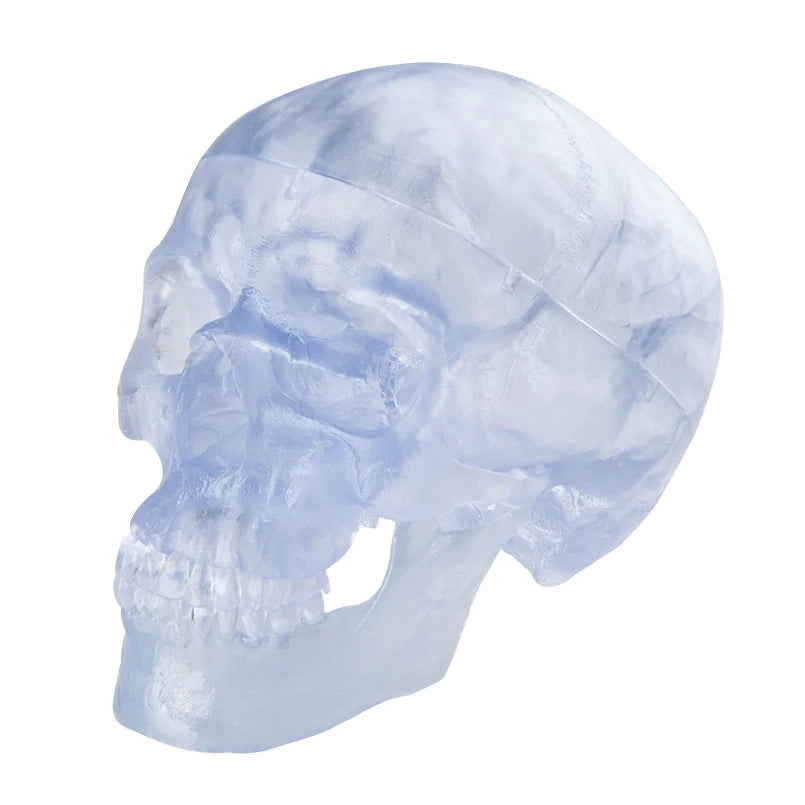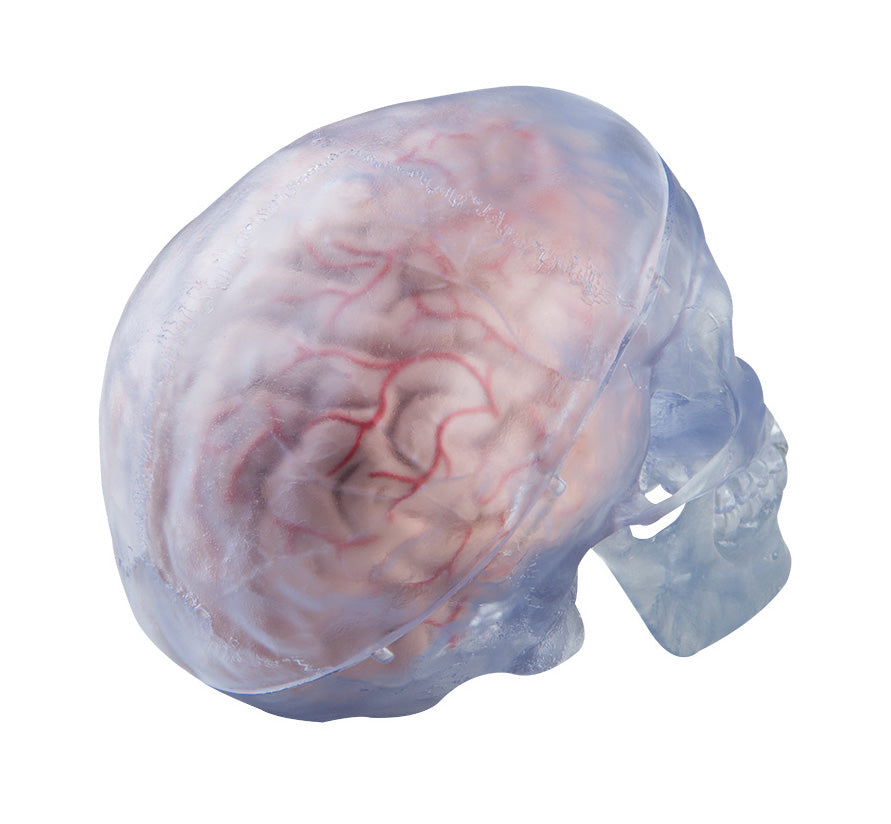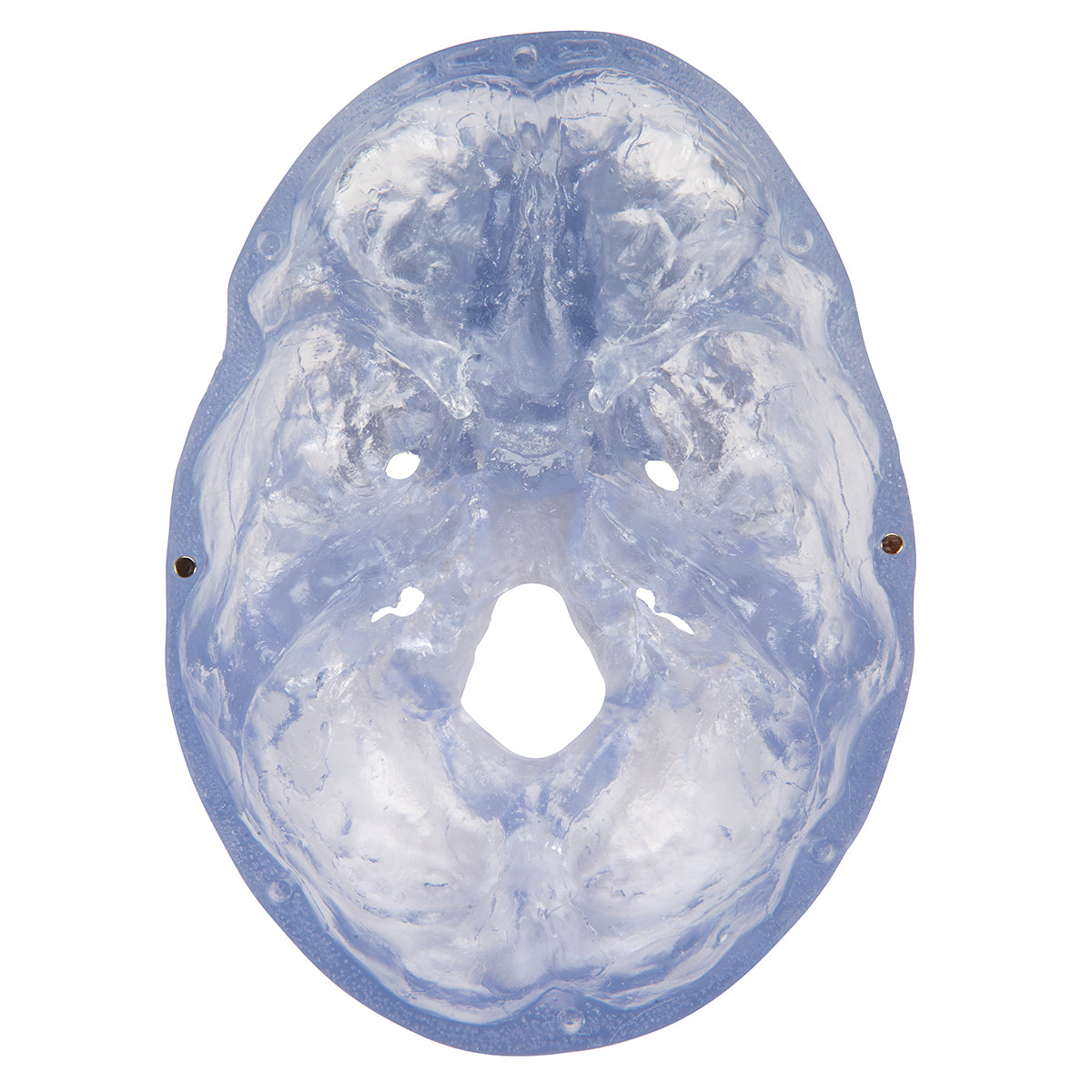SKU:EA1-1000051
Transparent skull model that can be divided into 3
Transparent skull model that can be divided into 3
ATTENTION! This item ships separately. The delivery time may vary.
Couldn't load pickup availability
This skull model is developed in transparent plastic and can contain a brain model that can be seen from the outside.
The model is delivered in a size that corresponds to an adult person. The dimensions are 20 x 13.5 x 15.5 cm and the weight is approximately 700 grams. The skull cap ("the top") can be removed, so i.a. the base of the skull (basis cranii interna) can be studied and a brain model can be inserted. Furthermore, the jaw can be easily and quickly removed.
The model has been developed to be able to contain a specific brain model from the same manufacturer. Brain model is not included and must be purchased separately if desired.
Anatomically speaking
Anatomically speaking
Anatomically, the human skull can be divided into 2 parts, and the skull model therefore shows the following:
1) The braincase (neurocranium), which is intended to enclose the brain and the hearing-equilibrium organ
2) The facial skeleton (viscerocranium) which surrounds the nasal cavity and forms the tooth-bearing framework around the oral cavity. The 32 teeth are also included
The braincase and facial skeleton include many different bones. Due to the transparent plastic, it is difficult to identify all the bones, even if there are different shades of color in the material.
The model is therefore not suitable for studying the degree of detail on bones and "osseous landmarks", although some are very clearly seen (e.g. processus styloideus).
The model, on the other hand, is suitable for studying the location of the brain in the braincase when a brain model is inserted.
Flexibility
Flexibility
In terms of movement, it is only relevant to mention the jaw joint. The lower jaw bone ("mandible") is held in place via a relatively long metal spring, which is attached via screws to the mandible and palatine bone. The metal spring can be easily and quickly removed from the screw in the mandible without the screw having to be removed. Therefore, the mandible can be completely removed in a few seconds.
There are also large pieces of rubber fitted in the joint bowls (fossa mandibularis) of the jaw joints, which hold the joint head (caput mandibulae) "like in a rubber bowl".
The model's jaw joints are not very flexible. Natural movements in the jaw joint require that, among other things, the articular head can slide forward and downward until the articular head is forward on the tuberculum articulare. The latter is the bony part with a weak guiding groove in front of the depression (fossa mandibularis). This can only be demonstrated on the model if the rubber in the joint cups is removed, which the model is not designed for.
If you take a firm hold of the mandible, you can however move it up and down and to the sides, although the natural sliding joint mechanism as described above cannot be demonstrated at all.
Clinically speaking
Clinically speaking
Clinically speaking, the skull model can be used to understand diseases and disorders in the brain when a brain model is used. It can also be used as decoration.
Share a link to this product

A safe transaction
For 19 years I have been managing eAnatomi and sold anatomical models and posters to 'almost everyone' who has anything to do with anatomi in Scandinavia and abroad. When you place your order with eAnatomi, you place your order with me and I personally guarantee a safe transaction.
Christian Birksø
Owner and founder of eAnatomi and Anatomic Aesthetics














